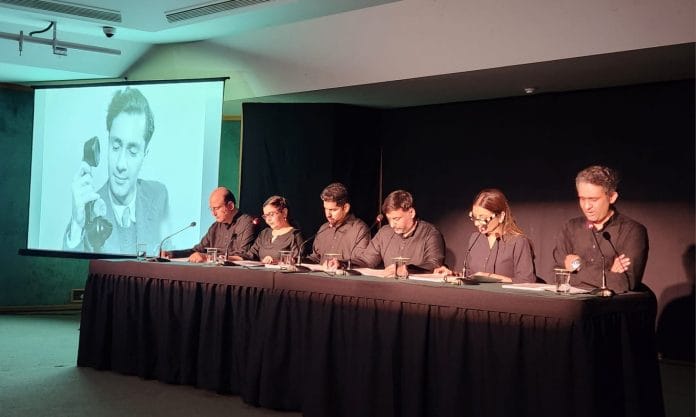New Delhi: The name Balraj Sahni brings to the 21st century mind a mosaic of images. A member of the Indian People’s Theatre Association, a committed communist, a powerhouse of talent, Do Bigha Zamin, Garam Hawa, and, of course, that evergreen Waqt song ‘Aye Meri Zohra Jabeen’.
By any measure, these add up to a prideful and formidable body of work. But a new performance in Delhi reveals a Balraj Sahni who was troubled, insecure, under-confident, and an anxious actor—far from the effortless, natural talent that public memory has often projected.
A dramatised reading of the actor’s 1972 autobiography, Flashback: The Story of Balraj Sahni, by the Three Arts Club is both a loving tribute and a reminder of how collective memory can be constructed very differently from reality.
Six seated actors in black kurtas read aloud and emoted different sections from Sahni’s book, and recreated his early life in Rawalpindi, his struggles in Mumbai, the arduous Kolkata shoot of Do Bigha Zamin, and the sexual exploitation of women in Bollywood.
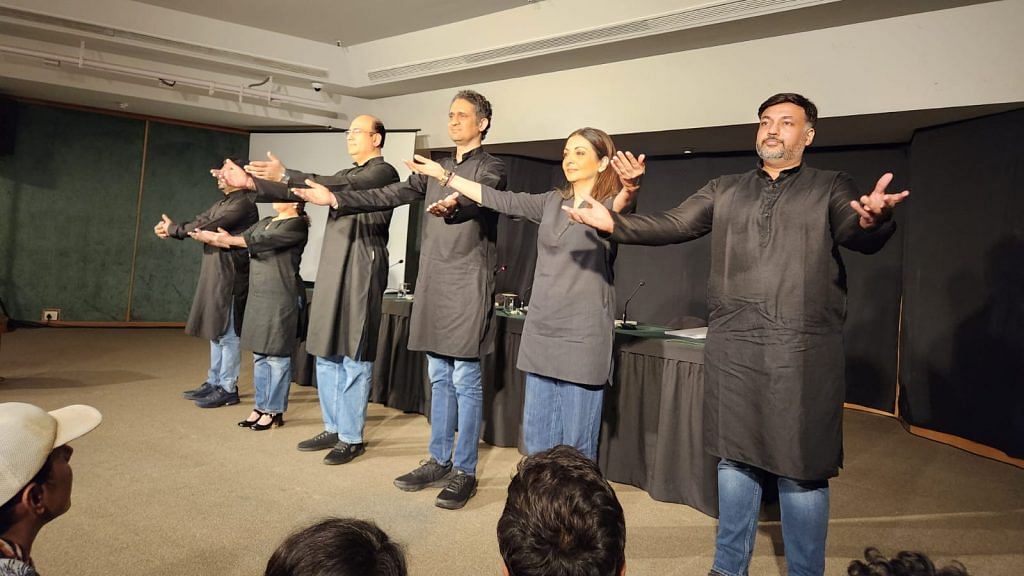
“I couldn’t give a single good shot. I was in a bad shape,” one of the actors read out the lines in Balraj Sahni’s book about the shooting of Hum Log (1951), a hit film about the trials of a lower middle class family starring Nutan, who plays a TB patient. “The fear of the camera sat on my chest like a mountain. I even peed in my pants. I went home and wept to my wife that day. I will never be an actor, I said.”
And that is the central shocker in the enactment. It upends the mythology surrounding legendary Bollywood actors—myths forged over time from Mumbai folklore, film magazines, and fandom.
Also read: Balraj Sahni, the common man’s hero who told their story through cinema
‘Teach me, someone, anyone’
Balraj Sahni frequently wrote about feeling nervous, his throat drying up in front of the camera, and his legs going weak. He was especially intimidated by the task of memorising lengthy lines for his scenes. This led to what he dreaded most—multiple retakes that embarrassed him and eroded his confidence even more.
Such diffidence is counter-intuitive for a man who grew up obsessed with movies in Rawalpindi, acted in IPTA plays, wrote the screenplay for the path-breaking film Baazi (1951) directed by Guru Dutt and starring Dev Anand and Geeta Bali, lived with Chetan Anand, and taught in Shantiniketan. But such was his struggle with acting that he turned to everyone for advice, from David Abraham Cheulkar to Dilip Kumar. He was desperate to learn.
“Going in front of the camera was like standing in front of a noose. I broke out in sweat. I would feel people were laughing at me. Everything went out of focus,” one actor read from his autobiography.
During the shooting of K Asif’s Hulchul (1951) with Dilip Kumar and Nargis, the panic attacks started again. He kept forgetting his lines. The movie was loosely based on the novel Wuthering Heights. Sahni played the role of a jailor. Ironically, he was in jail when he received permission to step out and shoot for the film.
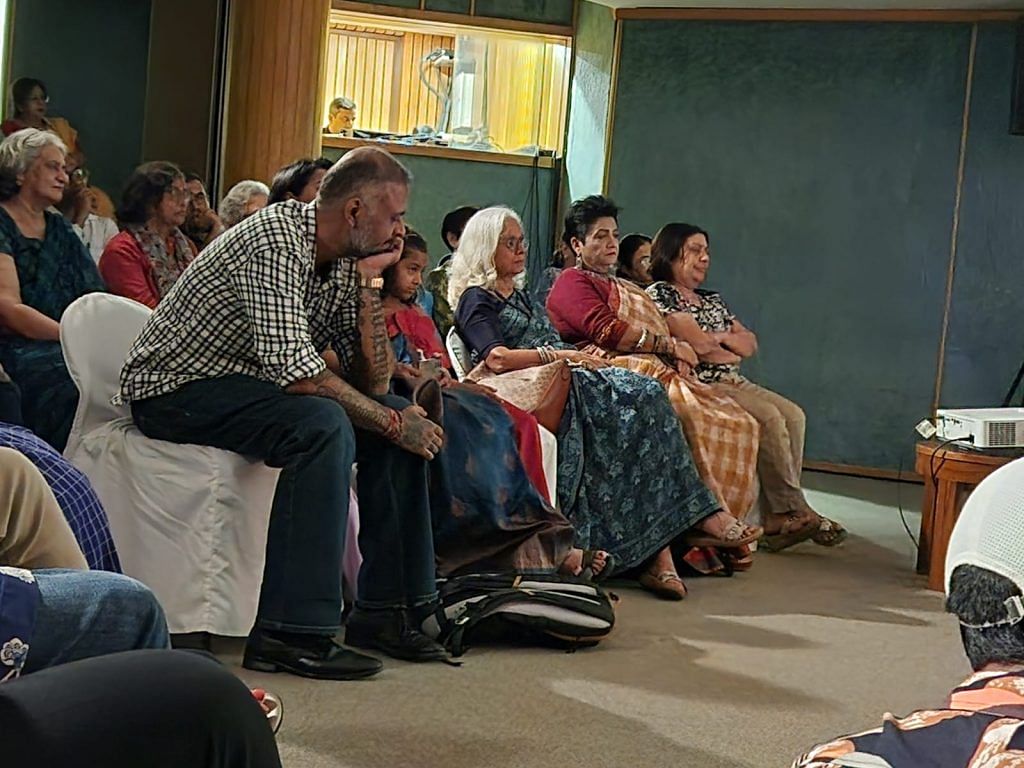
“How do you work so effortlessly in front of [the] camera?” Sahni asked Dilip Kumar one day. “He replied: ‘I have learned by watching others. And some friends helped.’ His reply disappointed me. I wanted to learn from him, but he dismissed me lightly.”
He had also asked the same question to actor David during the shooting of Gunjan (1948) with co-star Nalini Jaywant: “How do you memorise dialogue? What is your process? You don’t do retakes.”
David told him that behind every line, there is a visual, and Sahni just had to remember that visual.
Also read: Balraj Sahni’s 1972 JNU speech: Men with power respected more today than men with talent
Documenting sexual exploitation
Sahni wrote extensively about the rampant sexual exploitation that women actors faced in the film industry. He noted how it was nearly impossible to become a female star without pleasing male producers and directors.
Nargis’ brother, Anwar Hussain, narrated an incident to Sahni. It involved a 21-year old Meena Kumari and a producer. On the first day of shooting, he started to touch her inappropriately. Meena Kumari took him aside and told him to behave. Angered, he decided to take revenge by adding a scene right then where the male actor—a popular hero of the time—slapped her.
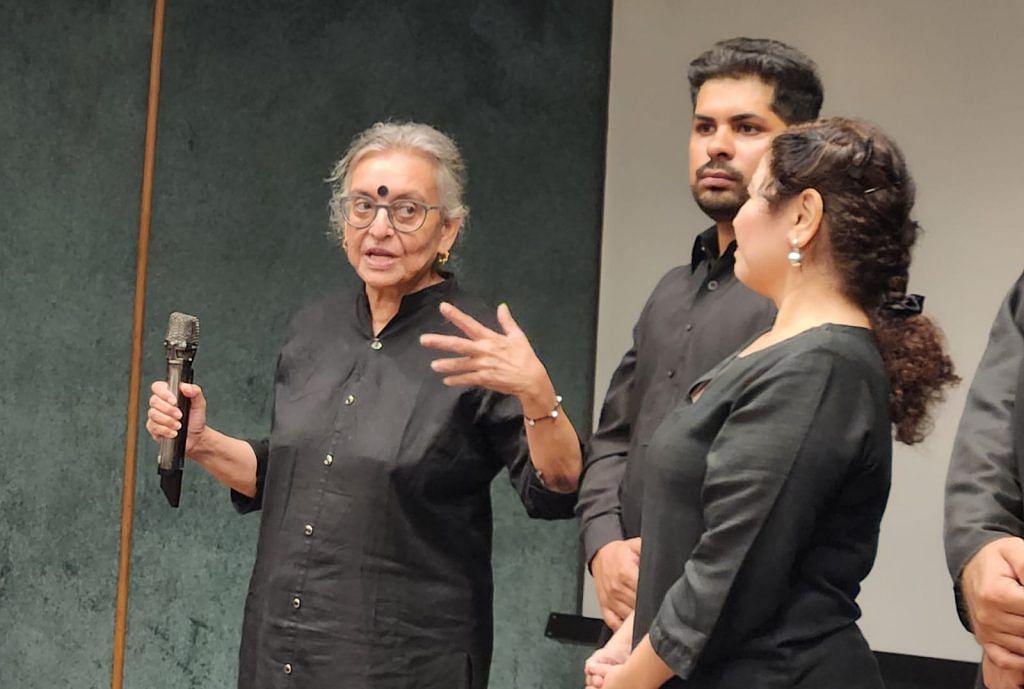
“There were 31 retakes of that one slap shot. Thirty-one slaps. He was a popular actor. He knew what was going on. Still, he went along with the 31 retakes. Meena Kumari finished the shoot and went to her makeup room and wept quietly.”
Sahni also wrote about Helen, whom he met for the first time on the set of Badnam (1952). She understood early on that the film industry was full of sexual predators, he wrote. She became close to producer PN Arora, who was 27 years older than her, and eventually married him, which kept her safe and off-limits, wrote Sahni.
Also read: When my father Balraj Sahni showed the ills of capitalism to me in Kashmir
The voice in Balraj Sahni’s head
Sahni’s best work came in Bimal Roy’s Do Bigha Zamin (1953), a seminal film about an evil feudal landlord, debt, and the migration to Kolkata to work as a rickshaw puller to retrieve his farmland. The film won national and international awards and was a pioneer in neo-realistic cinema. It featured hit songs like Apni Kahani Chhod Jaa and Hariyala Sawan. To prepare for his role, Sahni learned to operate a manual rickshaw in Kolkata and ran with real passengers as a hidden camera on a truck recorded him on the streets.
“I would lift the rickshaw and run barefoot. My skin had started peeling. I would be breathless, exhausted and beg Bimal Roy to stop shooting. Roy would say ‘Just two more shots’.”
How Sahni bagged the role is a story in itself. One day, while building sandcastles with his children on the beach, he saw actor Asit Sen coming toward him. “Bimal Roy is looking for you for a role,” he said.
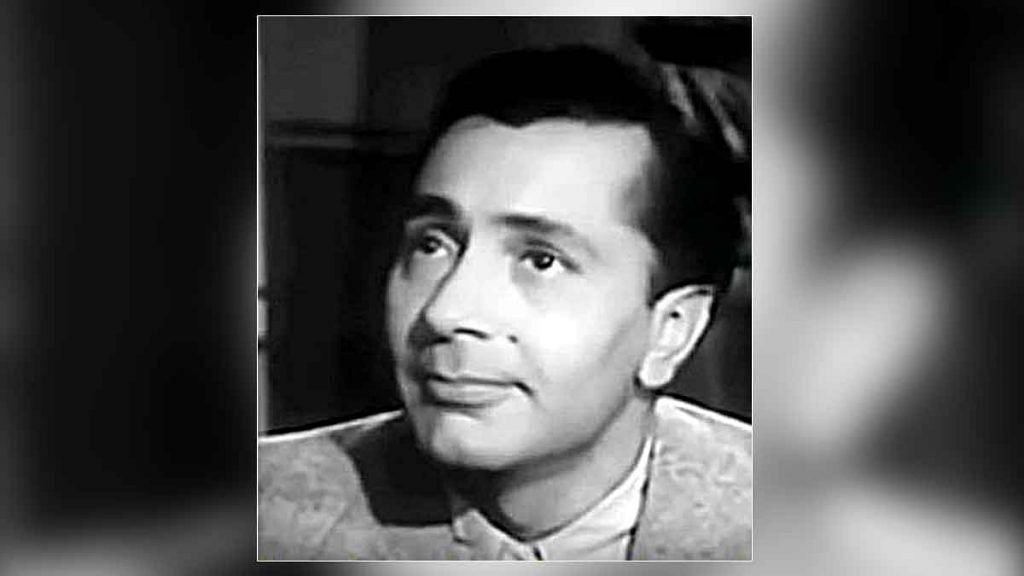
“I couldn’t believe it. I dabbed some face powder, ironed my suit from England and rushed. Roy stared at me and said, ‘My men have made a mistake. You are not suitable for the role.’ I asked what is the role. An illiterate poor villager, he said. I wanted to turn away and leave, but I could hear a voice in my head saying this opportunity won’t come again.”
Sahni reminded him of an earlier 1946 film about the Bengal famine called Dharti Ke Lal, where he played a gaunt farmer who goes on to build a Soviet-style communal farm. Directed by Khwaja Ahmad Abbas and co-produced by IPTA, the film was based on an IPTA play called Nabanna. The New York Times described it as “gritty realistic drama”. That did the trick, and Sahni landed the role in Do Bigha Zamin. Hrishikesh Mukherjee, who was an assistant on set at the time, wept while narrating the film’s story to Sahni. Later, he found out that Bharat Bhushan and Ashok Kumar had also auditioned for the role.
Although he gained fame from the film, he remained poor, Sahni wrote. He had no work for six months and took on the role of an alcoholic in Bazooband (1954).
Roy questioned his choice. How could he take this role, especially after doing a film like Do Bhiga Zamin?
“I felt like saying to him: ‘But you didn’t even check on me once after the film’,” Sahni wrote.
The timeless image
Another enduring image of Balraj Sahni comes from the 1965 Yash Chopra film Waqt—a star-studded inter-generational tale of loss-and-reunion, with famous tracks like Aage Bhi Jaane Na Tu and Kaun Aaya Ke. But Balraj Sahni’s Aye Meri Zohra Jabeen (sung by Manna Dey) has had the most shelf life. In the opening song, the middle-aged patriarch, played by Sahni, wears a pathani salwar and kurta, and sings to his blushing wife at a family celebration.
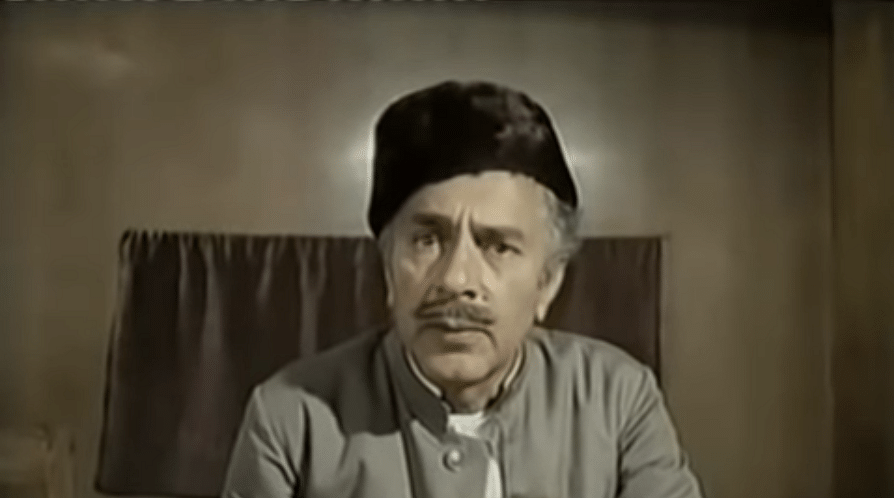
He died in 1973 after finishing the dubbing of MS Sathyu’s Garam Hawa, a sombre film about an Indian Muslim family’s dilemma during Partition.
Just a year earlier, he wrote in his autobiography that had he not been a film actor, he would have become a writer or an Arya Samaj pracharak (campaigner).



